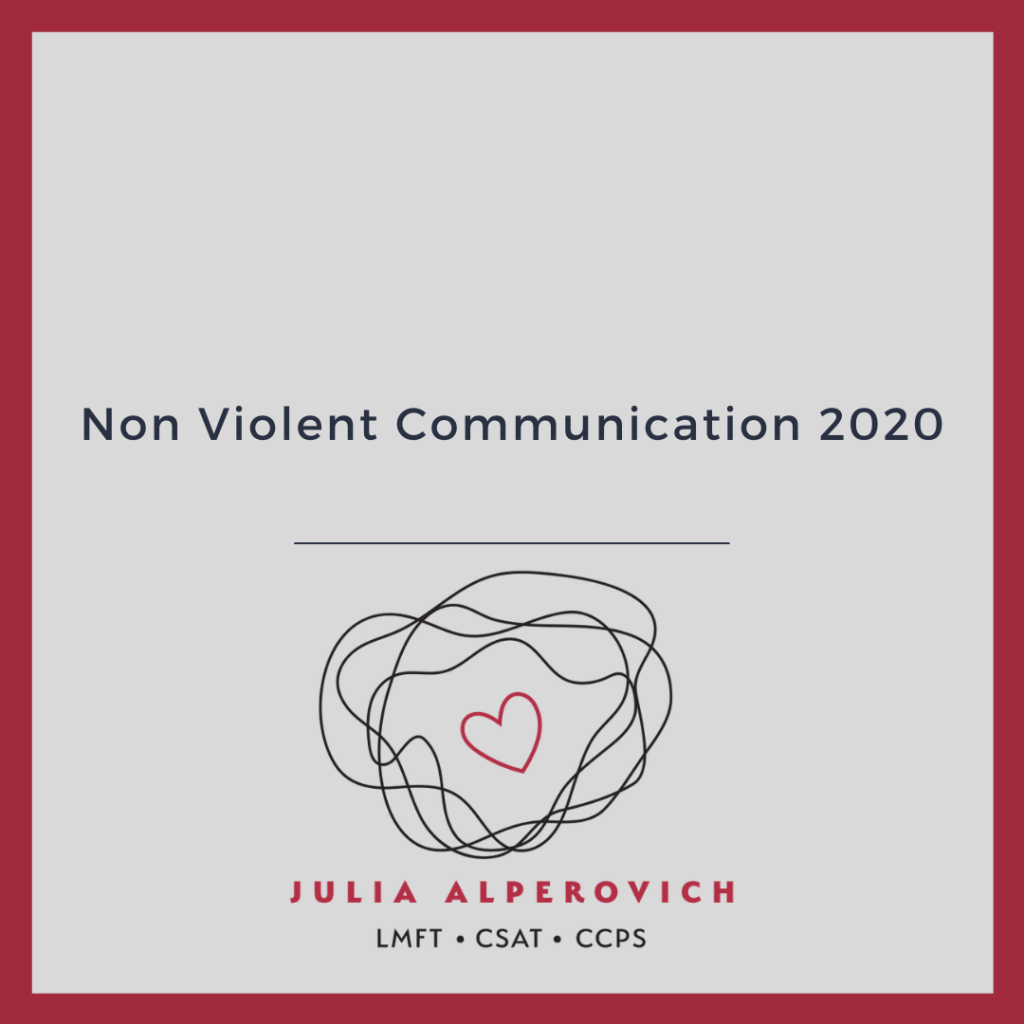Non Violent Communication 2020 is a suggestion to all my patients, non patients, friends, and family to communicate with more compassion and understanding. People have turned to non violent communication for conflict resolution, but when you apply it to your daily life, the results are more authentic connections and expressions of needs that stop miscommunication, and start healing.
Let’s dive in.
What is the purpose of Non Violent Communication
NVC brings your awareness to what you are saying. This form of communication holds you accountable for everything you say. It is not trying to change anyone, it comes from a desire to understand another person’s position and explain your own feelings and motivation clearly and honestly.
When do we use NVC and Do I need training?
We can use NVC when we are making requests, for safety, for boundaries, for everything. You need three things for the practice, self empathy, empathy for others, and the capacity for honest self expression. These may sound easy, but let’s unpack some of this because if you suffer from past traumas or have a personality disorder where you lack empathy, NVC will be very difficult.
Self empathy is an awareness and compassion for your inner experience. This includes bodily sensations, needs and values, and being in touch with your own feelings. Empathy for others is the ability to relate and show compassion for the inner experience of another person. You show empathy by listening, to yourself and to other people. Lastly, is the ability for honest expression of what your experience is. Being able to relate your experience to another person without blame or manipulation.
There are many reasons why a person is not capable of NVC. If you recognize a disconnect in yourself, I am happy to help, just contact me here,
The Four Components
There are four components of Non Violent Communication, observation, feelings, needs/values, and requests. Use these components to express yourself during conflict or during a moment that feels hard to manage. Focusing on only YOU and your experience, then listening to the experience of another person, and finding common ground is what NVC is all about. Universal needs of both parties. Here are the four components.
Observations are neutral states without subjectivity. They do not include evaluations, labels, analysis, or interpretations. Anyone can offer an observation because they are objective and not colored by projections.
Feelings. Feelings are pure emotions or bodily sensations, without third party perception or interference. Beware when communicating feelings of victim verbs that mask themselves behind the word feeling. I feel insulted, attached, blamed etc.
Needs/Values. Needs and values are the universal needs. This is where we are trying to make an accord and meet two viewpoints. The important thing here is to make sure they do not include “should” or reference specific people, actions, or things.
Requests. Requests are present, actionable, concrete, and specific. They should be expressed as affirmative such as I do want, rather than don’t want.
How to Use NVC? Non Violent Communication 2020
You can jump into practicing NVC or you can warm up to using NvC. An exercise would be to bring your awareness to how often you are expressing yourself to another person objectively, using your own feelings, without projecting something outside of yourself onto a situation. Keep a journal and make note of it. It is really important that you not judge yourself when you are observing. Journaling will also help if you find that you lack words for expressing feelings that are not colored by subjectivity.
With the holidays coming up, the election, and a pandemic roaring, this practice of compassionate speech and trying to find connection through universal needs has never been more critical. If you would like a private session to learn more about these techniques, my doors are open and I offer Zoom sessions.


